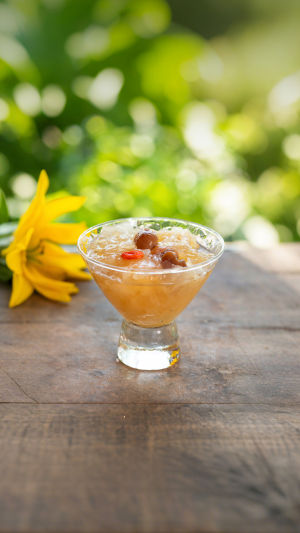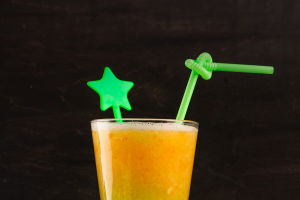Welcome, Lykkers! China offers a world of desserts that are unlike the confections commonly found across Western countries.
Here, sweets often feature natural ingredients such as fruits, legumes, seeds, and tubers.
They are usually less sugary and tend to be more integrated into meals or enjoyed as standalone treats, rather than being reserved only for the end of a meal. While the Western-style cakes and pastries are gaining popularity in urban centers, traditional local treats still hold a special place in the hearts of many.
Let’s explore three beloved Chinese desserts — from icy refreshments to sweet soups — and discover their origins, typical places where they are sold, average prices, and interesting tidbits that make them unique.
<h3>Tanghulu: Sweet and Crunchy Skewers</h3>
<b>Origin and Background</b>
Tanghulu traces its roots back to the Song dynasty, around the 12th century, and originated in the northern part of the country, particularly around Beijing and the northeastern regions.
Traditionally made from the fruit of the Chinese hawthorn, these small red berries are coated in hardened syrup and served on bamboo sticks.
<b>Where to Find It</b>
These skewers are commonly found at street stalls, especially during the colder months. Vendors set up in popular pedestrian areas, local markets, or near parks. Though the original version uses hawthorn, today one can find variations with strawberries, seedless grapes, kiwi, small tomatoes, and blueberries.
<b>Average Cost and Fun Facts</b>
On average, tanghulu costs between 5 to 15 yuan per skewer (roughly $0.70 to $2.00 USD), depending on the fruit used and the city.
A fun detail is the crunchy sugar coating often sprinkled with sesame seeds, providing a mix of sweet and tart flavors that both children and adults enjoy. In addition to the traditional skewered version, hawthorn berries are sometimes stir-coated in syrup that cools into a frosty white glaze — a local favorite in parts of northern China.
<h3>Sweet Soups: Light, Spoonable Delights</h3>
<b>Origin and Background</b>
These spoonable desserts are common in the southern parts of the country, especially in the Guangdong region.
Known for their silky textures and mild sweetness, they are made from a wide array of ingredients such as sago pearls, coconut or almond milk, fruit, sweet potatoes, and glutinous rice balls. Their preparation often draws from long-standing culinary traditions rooted in balancing flavors and textures.
<b>Where to Find It</b>
They are widely available in dessert shops and cafes, especially in urban centers like Guangzhou, Shenzhen, and Hong Kong. Many establishments specialize solely in these kinds of desserts, offering extensive menus with both hot and cold variations.
<b>Average Cost and Fun Facts</b>
Prices range from 10 to 30 yuan (about $1.50 to $4.50 USD) depending on ingredients and portion size. Popular options include mango sago with coconut milk and sweet red bean or green bean soups. During hot seasons, chilled versions are preferred and sometimes topped with a scoop of ice cream.
The combination of chewy, creamy, and juicy elements makes this dessert not only refreshing but also satisfying without being overly rich.
<h3>Bingfen: Cooling Jelly From Central China</h3>
<b>Origin and Background</b>
Bingfen, meaning “ice jelly,” is a traditional dessert from central regions like Sichuan and Hubei. It features a smooth, translucent jelly made from the seeds of a plant known locally as the “ice powder tree.” The jelly itself is flavorless but absorbs the taste of the toppings and syrup added to it.
<b>Where to Find It</b>
This dessert is a summertime staple in local markets, small dessert vendors, and outdoor festivals. In cities like Chengdu and Wuhan, it’s a must-try during hot weather. Vendors often prepare the jelly in large bowls and let customers choose their preferred toppings.
<b>Average Cost and Fun Facts</b>
Typically priced around 8 to 20 yuan ($1.00 to $3.00 USD), bingfen is both affordable and customizable. The syrup used is usually made from unrefined cane sugar, and toppings can include goji berries, sesame seeds, crushed peanuts, fermented rice, and small glutinous rice balls. The contrast between the slippery jelly, crunchy seeds, and sweet syrup creates a refreshing experience ideal for summer afternoons.
<h3>Modern Touches: Western Influence on the Rise</h3>
In recent years, there has been an increase in bakeries that offer desserts influenced by global trends. These establishments can be found in major cities such as Shanghai, Beijing, and Shenzhen. Some are run by professionals trained abroad, offering pastries, tarts, and breads that closely resemble European or American styles — both in appearance and flavor.
<b>Where to Find It</b>
From boutique patisseries in shopping districts to independent cafes in art zones, these modern shops blend traditional Chinese ingredients with globally popular techniques. Prices are generally higher, with pastries costing between 20 and 60 yuan ($3.00 to $9.00 USD).
<h3>Conclusion: Sweets for Every Palate</h3>
For anyone curious about the dessert landscape in China, there’s a rich variety to explore beyond common assumptions. Traditional snacks like tanghulu, sweet soups, and bingfen offer a window into regional tastes and seasonal favorites. Embracing these sweet treats means appreciating a different cultural approach to flavor, texture, and enjoyment. Let your sweet adventure begin, Lykkers!





